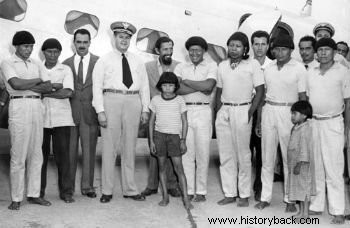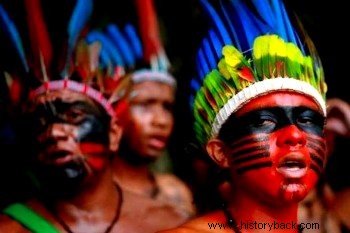TheIndian Day is celebrated on April 19 and was instituted in Brazil during the Vargas government.
Schools, entities and various indigenous groups hold events to remember the importance of indigenous culture in the formation of the Brazilian people.
Origin and history of the Day of the Indian
On April 19, 1940, the "1st Inter-American Indigenous Congress" was held in the municipality of Pátzcuaro, in the state of Michoacán, Mexico.
Thus, to celebrate this event, the 19th of April was the date chosen during the government of Getúlio Vargas (1883-1954), through Decree-Law No. 5.540, of 1943.
Several government officials and several indigenous leaders were present at the congress. During the event, the Inter-American Indigenous Institute was created, based in Mexico, which works to collaborate in the coordination of indigenous policies in America.

4 activities to celebrate Indian Day
In schools, it is customary for children to participate on this day in activities that refer to indigenous customs.
Unfortunately, due to the American influence, students end up copying US models rather than valuing Brazil's rich indigenous culture.
So, some suggestions for activities to celebrate Indian Day:
1. Cuisine :prepare some food with manioc, make some recipe like a boiled banana with fish.
2. Literature and Portuguese Language :tell tales of indigenous legends and search for the meaning of words of indigenous origin.
3. Sport :perform some modality that is foreseen in the Indigenous Games such as throwing a spear or running with logs.
4. Art :show students photos of different indigenous ethnicities in Brazil (or the world) and ask them to reproduce it for themselves. Remembering that indigenous people do not just paint their faces, but their bodies. It is also possible to use indigenous feather art for handicrafts.

Importance of the Indigenous People and their contribution to Brazilian culture
The indigenous people were an important part in the formation of Brazilian culture. Its influence is revealed in the customs, food, language and ethnic mix of the Brazilian people.
We can point out the use of the hammock, the handicrafts of straw and vine, the manufacture of ceramic utensils, with some of these brands.
In cooking, we have foods made with corn, fruits and manioc. In medicine, the use of medicinal herbs stands out.
Likewise, in Brazilian folklore, there are figures of caboclinhos, shamans, legends that tell the origin of plants such as the water lily and birds such as the Uirapuru.
11 examples of words of indigenous origin
A considerable number of words of indigenous origin make up the Brazilian vocabulary:
- Maracanã
- Ipanema
- Itamaracá
- Itu
- pororoca
- peacock bass
- uirapuru
- cashew
- pitanga
- Jaci
- Iara
In Brazil, there are 896,919 Indians from 305 ethnic groups, who speak 274 languages and live scattered throughout the country.
In 2012, a survey was carried out in 32 villages in all regions of the country, where 1,222 Indians of twenty ethnicities were interviewed.
The result of the research reveals that the Indians want to progress socially through work and studies, while valuing their culture.
Read more :
- Brazilian Indians
- Indigenous legends
- Brazilian indigenous art
- Indigenous games
